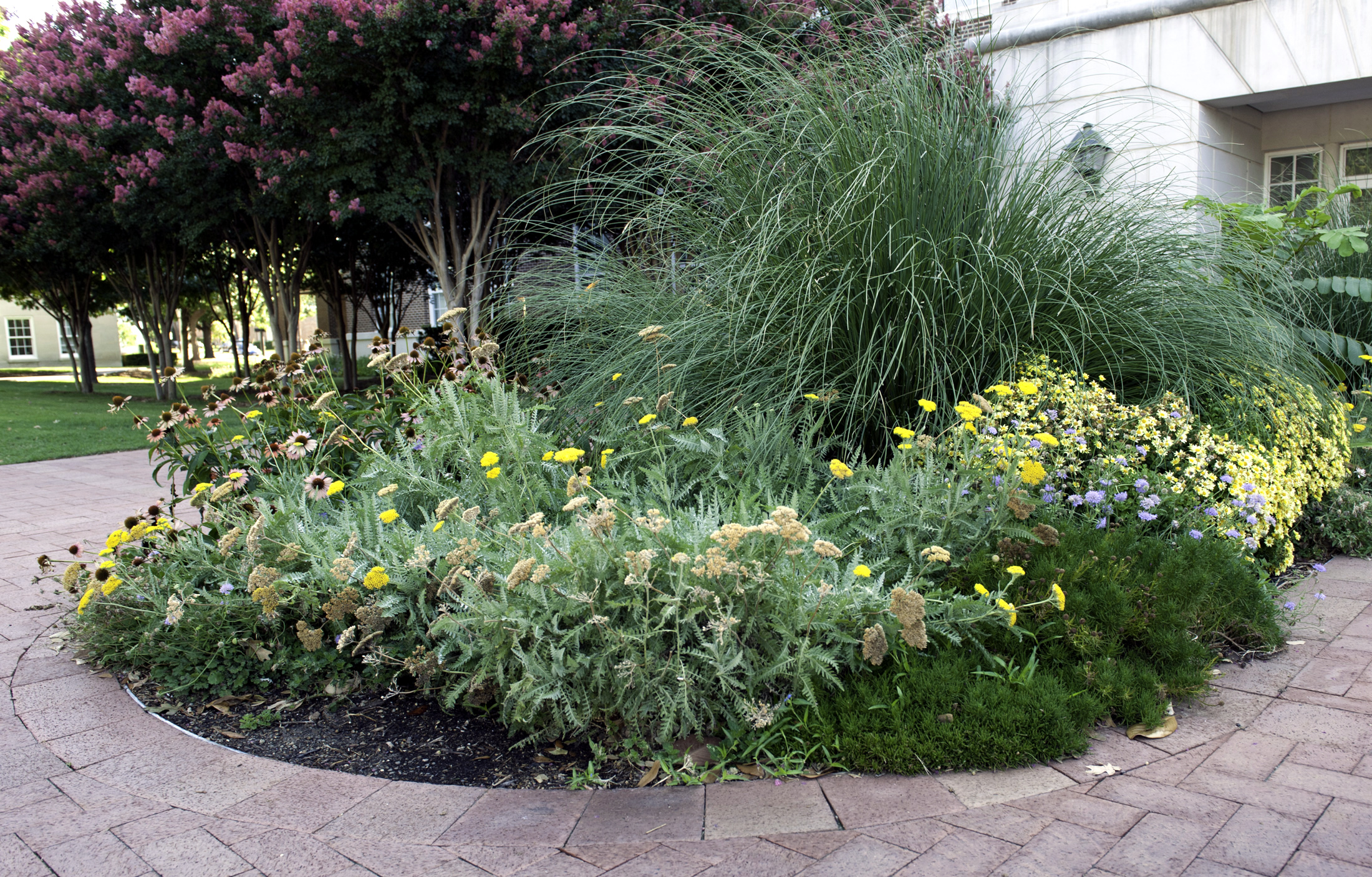SMU’s Landscape Pro: Five Ways to Manage Extreme Heat & Drought
SMU Landscape Manager Kevin Dilliard oversees the SMU campus’ 175 acres, recognized as one of the most beautiful university grounds in the country in spite of North Texas’ extreme soil and weather variations.
By Denise Gee
SMU News
(See slide show by Kevin Dillard at bottom of story. 
Dilliard oversees the SMU Dallas campus’ 175 acres, recognized as one of the most beautiful university grounds in the country in spite of North Texas’ extreme soil and weather variations.
When triple-digit temperatures and lack of rain wreak havoc on your home landscape, Dilliard recommends the same five steps he uses to keep the campus looking good:
- Plant the right plant in the right place. Use plants that are native or adaptive for your specific area of the state. Check the planting labels for proper directions. “Don’t force a plant to grow where you know it will not survive,” Dilliard advises. Dilliard offers his favorite drought-tolerant plants below, all of which are used on the SMU campus.
- Alyssum, used occasionally
- Autumn sage, used occasionally
- Desert willow, southwest corner of Umphrey Lee Center
- Knockout roses, near SMU Flagpole and elsewhere
- Lantana, used occasionally
- Liriope (“monkey grass”), throughout campus
- Mexican feather grass, in front of Annette Caldwell Simmons Hall and elsewhere
- Moss rose, at Dedman College sign and elsewhere
- Pincushion flower, used occasionally
- Pride of Barbados, in front of Dawson Service Center
- Sedum, used occasionally
- Texas sage, in front of Crum Basketball Center
- Vitex trees, south side of Owen Arts Center
- Yucca, at southwest corner of Umphrey Lee Center, and red yucca, in front of Crum Basketball Center
- Group plants that have the same watering requirements together so you don’t waste water or over-water.
- Water deeply and infrequently to force plant roots down into the soil. “This helps the plants survive during drought,” he says.
- Use a good covering of mulch around and under the plants to help retain moisture and keep plant roots cooler.
- Set mowers at the highest recommended height for your type of grass. “This will reduce the stress on the turf and help shade the roots,” Dilliard says. The suggested highest-setting mowing heights for the most common grasses during the summer season are:
- Bermuda, 1.5 inches
- St. Augustine, 3 inches
- Zoysia, 2 inches
- Tall fescue, 3 inches
For more information, Dilliard can be reached at kdilliar@smu.edu or 214-768-3958.
A Tour of SMU Flowers and Grounds by Kevin Dilliard
# # #
